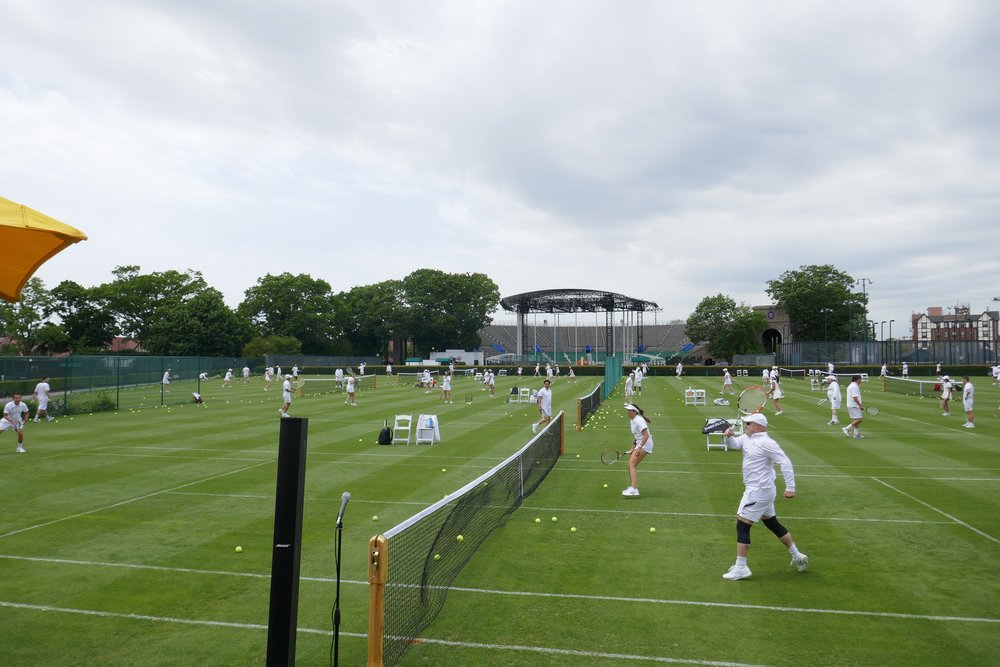Return of the Davis Cup in Forest Hills
The past decade has been a rebirth for the historic West Side Tennis Club. There was the return of concerts in 2013, a pro tennis event in 2016, and the annual Heritage Day event.
Most recently, the club hosted a Group II playoff series of the Davis Cup by Rakuten. On September 18 and 19, South Africa defeated Venezuela, 4-0. Victories were achieved in singles and doubles by rising Association of Tennis Professionals star
Lloyd Harris, a 24-year-old South African who recently reached the U.S. Open quarterfinals, was victorious in both singles and doubles play.
“The Davis Cup has always been a part of my schedule,” he told the media. “It is obviously very important to represent your country, and get out there and play.
“This is an incredible venue,” Harris said of WSTC. “I learned so much about this venue and its history over the last few days. I’m obviously very, very honored to be playing in a special place.”
Philip Henning of the South African squad called it “honor” to represent his country in Forest Hills.
“We love our sport, and this place is one of the places with the most history for tennis,” he said. “A lot of big names played on this court.”
“As a player, you always dream to be in the historic venues, and the important sites and most famous stadiums and arenas all over the world, and this is one of them,” said Venezuelan Ricardo Rodriguez after his loss to Henning. “Even though I lost, I still feel lucky to be here.”
The Davis Cup was founded in 1900 by Dwight Davis at the Longwood Cricket Club in Boston. It originated as a challenge match between the U.S. and the British Isles. Today, it is the largest international team competition with over 120 nations.
“We would love to host more Davis Cup matches or other big pro events,” said Jason Weir-Smith, WSTC’s director of Racquet Sports. “WSTC has proven to be a suitable and enjoyable site for players and fans, with an unparalleled tennis history in the United States.
“With Queens being one of the most ethnically diverse communities in the world, Forest Hills would be particularly attractive for national team events or tournaments with popular international tennis stars.” he added.
The Davis Cup was last played in Forest Hills Stadium in 1959. Rod Laver, Roy Emerson, and Neale Fraser led Australia to a Davis Cup win over the U.S., which was led by Alex Olmedo, Butch Buchholz, and Barry MacKay.
The Davis Cup was last held in Queens in 1981 at the USTA National Tennis Center. A quarterfinals match between the U.S. and Czechoslovakia featured John McEnroe, Jimmy Connors, and Ivan Lendl.
Weir-Smith said the public is nostalgic for Forest Hills tennis.
“Those who are perhaps too young to see pro tennis here, have certainly seen videos and pictures that display the majesty, beauty, and history of the club,” he said.
Randolph Walker was the U.S. Davis Cup press officer from 1997 to 2005. The first Davis Cup he attended was in 1981 at the USTA National Tennis Center.
“In a summer that saw Major League Baseball played at the ‘Field of Dreams’ in Iowa, it certainly was special for pro tennis to return to its own Field of Dreams,” said Walker. “So many people could feel the ghosts of tennis champions past.
“That made the event so memorable for all, and will make future tennis events played on that court much more special,” he added.







